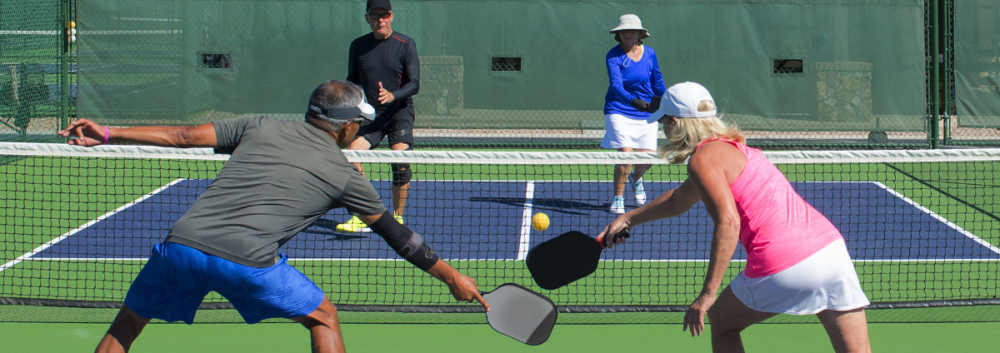Dinking is a very important part of the game, especially at the intermediate level and above. At the highest level it is not unusual to see dinking rallies of 10 or more, often many more, These are very tactical, The idea is that your opponent has to be hit the ball below net height, making it difficult to attack. Ideally your opponent will need to step into the kitchen to play the ball after the bounce. If they are able to reach in and volley, the lower the ball and closer to their feet the better.
Variation 1. The drill requires two players, the ‘coach’ and the ‘student’ The coach initiates the drill by dinking to the feet of the student. The student dinks the ball back to the coach. After playing the dink the student should stay in the same position. The coach will then play a dink to on to the student’s backhand. The student dinks back to the coach who has not moved. The coach then dinks to the student’s back hand for the second time.. Assuming a right-handed student this requires the student to move further to their left who then dinks back to the coach who has remained in their initial position. The coach then dinks again to the student’s backhand who, for the third time dinks back to the still unmoved coach.
At this point the coach is in their starting position and the student is 3 steps to their left. The coach’s next dink, their fourth, is played to the student’s forehand. The student dinks back to the coach.The coach’s fifth and sixth dink is again to the student’s forehand. The student continues to dink back to the coach. After the coach’s sixth dink the student is back at the starting position directly opposite the coach who has not moved throughout the drill.
The drill can be repeated as often as required. It can be made competitive by a point being scored every time the rally breaks down. Note: the coach stays in the original position throughout. The student,after playing a return dink to the coach, should stay in that position in anticipation of where they know the next dink will be played to.
Variation 2. This drill is the same as above but this time the coach moves along the net to mirror the position of the student. Instead of staying in the same position as above, the coach will move along the net to be directly opposite the student as they return the dinks. The student plays a dink back to the coach who is now directly opposite them. This means the drill is comprised of the coach and student moving up and down the net together, 3 dinks to the student’s backhand and 3 dinks to the student’s forehands.
Video. How to dink consistently
